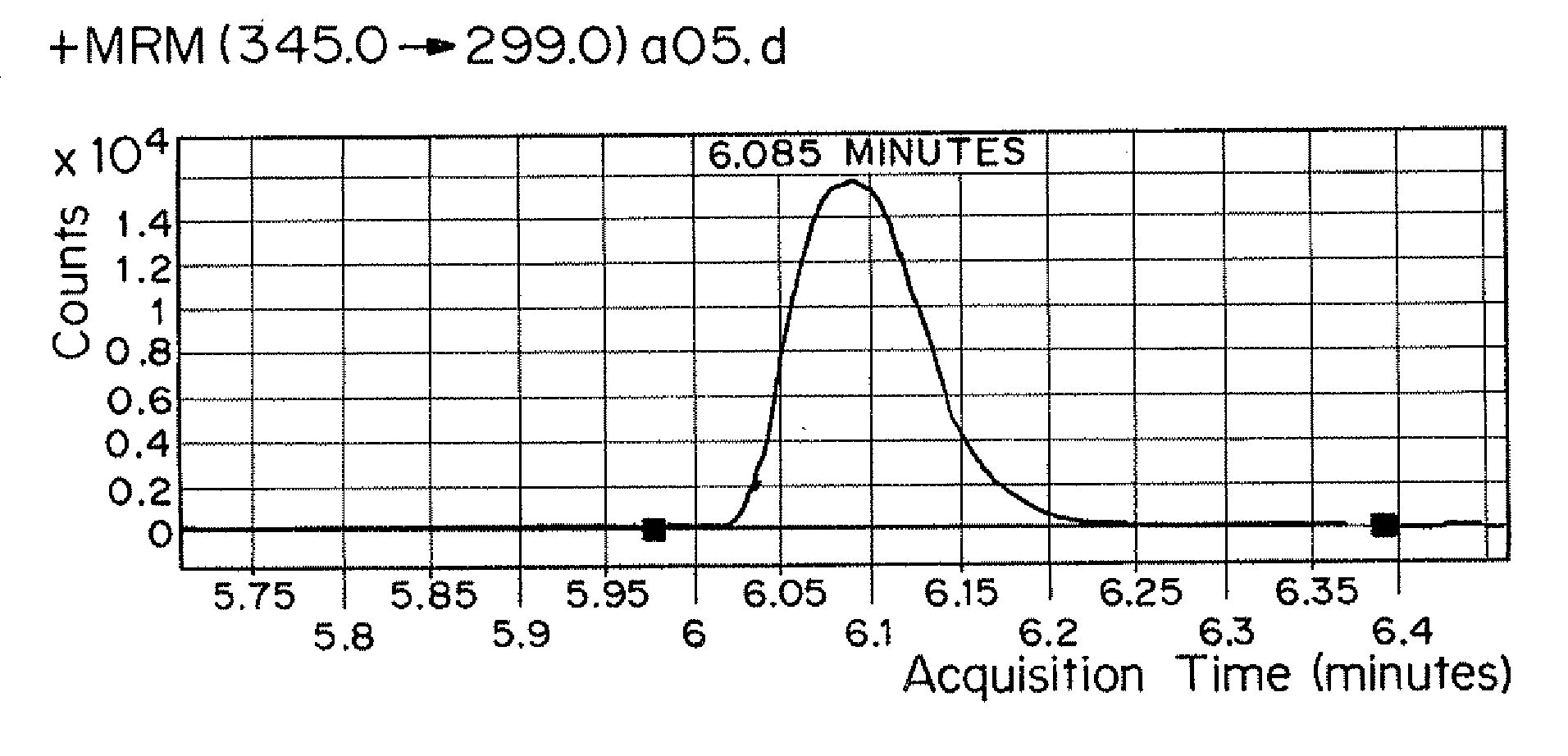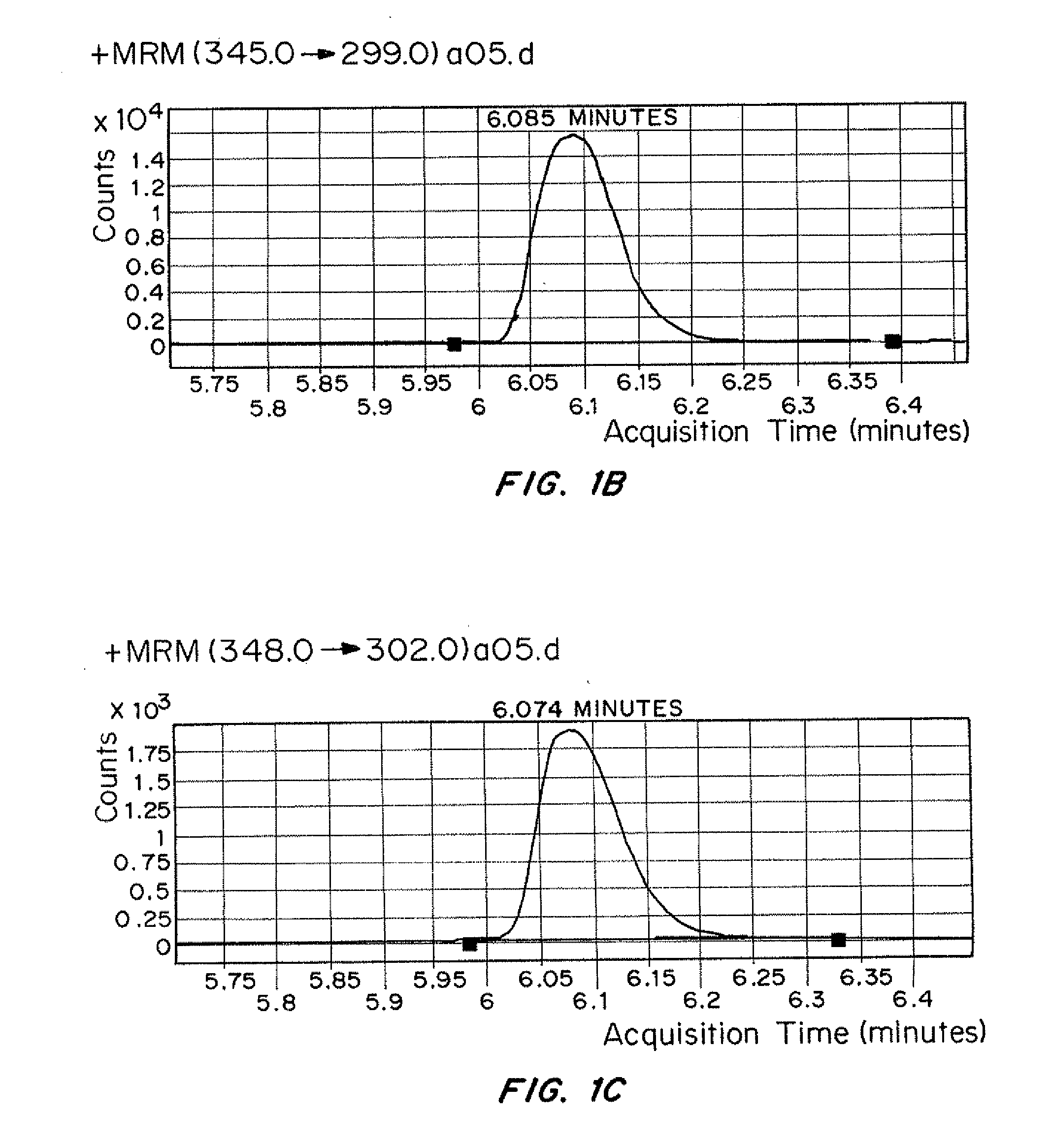Methods for detecting substances in biological samples
a biological sample and detection method technology, applied in the field of analytical techniques, can solve the problems of inability to quickly accommodate the detection of new drugs, lack of specificity of immunoassays for some tests, and inability to quickly accommodate immunoassays, etc., to achieve excellent separation of multiple drug classes, reduce analysis time, and short time
- Summary
- Abstract
- Description
- Claims
- Application Information
AI Technical Summary
Benefits of technology
Problems solved by technology
Method used
Image
Examples
example 1
Automated Extraction Procedure
[0102]All of the working solutions (e.g., calibrators, controls, and internal standards) were equilibrated to room temperature.
[0103]An internal standard mixture was prepared containing buffer (1 mmol with pH adjusted to 6.8 with concentrated HCl as necessary) and drug internal standard to deliver an internal standard concentration greater than the concentration of calibrator 1 and less than the concentration of calibrator 2 per specimen. If a dilution was necessary, the dilution factor used to make the dilution was recorded.
[0104]Enzymatic Hydrolysis of the Sample
[0105]0.75 mL of specimen was transferred via pipette into the 96-well plate sample wells. 127 μL of glucuronidase was added via pipette to each incubation well. The 96-well was sealed with a VWR Adhesive Foil Seal and placed in an incubator. The 96-well plate was incubated at 55° C. for a minimum of three hours or a maximum of four hours.
[0106]Solid Phase Extraction
[0107]All working solutions...
PUM
 Login to View More
Login to View More Abstract
Description
Claims
Application Information
 Login to View More
Login to View More - R&D
- Intellectual Property
- Life Sciences
- Materials
- Tech Scout
- Unparalleled Data Quality
- Higher Quality Content
- 60% Fewer Hallucinations
Browse by: Latest US Patents, China's latest patents, Technical Efficacy Thesaurus, Application Domain, Technology Topic, Popular Technical Reports.
© 2025 PatSnap. All rights reserved.Legal|Privacy policy|Modern Slavery Act Transparency Statement|Sitemap|About US| Contact US: help@patsnap.com



